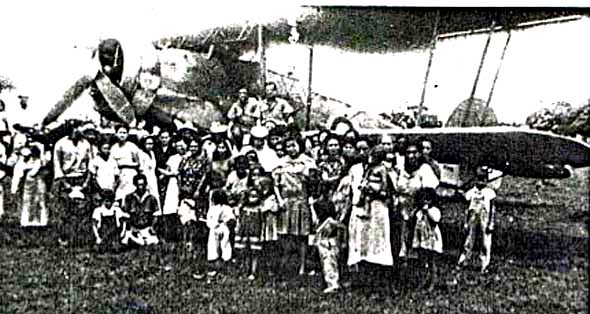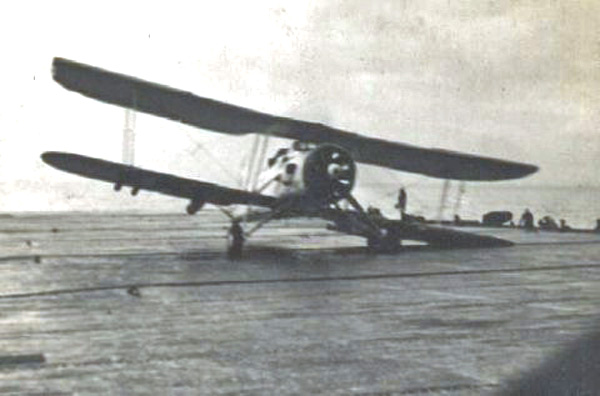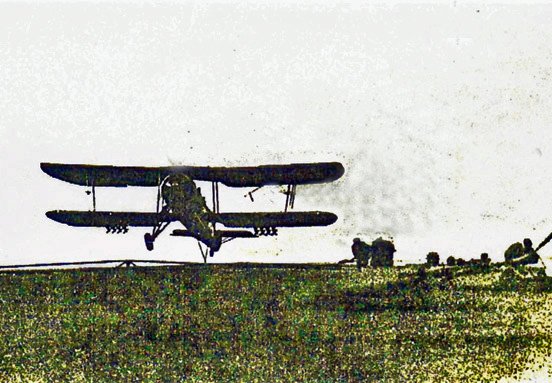|
The history of 836 divides
naturally into three parts. The Squadron originated in the spring of 1942
under the command of Lt.Cdr. Crawford RN in HMS Buzzard, a shore station
at Palisadoes, Jamaica. Training, begun in Jamaica,was continued in
New York
till the Squadron crossed the Atlantic
in June in the new Escort (Woolworth) carrier HMS Biter (Capt. Abel Smith
RN).In July 1942 at Lee-on-Solent, the Squadron reformed under the
command of Lt. Ransford W.Slater DSC, RN and here began the second,
central period-months of working up, followed by three months
operations from Thorney
Island- which ended in March 1943. The third period saw the departure of some of
the former stalwarts as the Squadron became permanently and exclusively
committed to the Battle of the Atlantic, providing and training Air Crews
for the succession of MAC Ships (Merchant Aircraft Carriers) which
followed the pioneering trials and Maiden Voyage of the first such ship-M.V.Macalpine.
After the voyage the Squadron entered its final phase and lost the tight
fellowship of earlier days as it expanded to 90 or so aircraft and crews
in its permanent base at Maydown,Northern Ireland.Some
men,
like Nick Piercy and Philip Blakey, served in all three
phases; some, like C.O., Reg Singleton and Owen Johnstone , knew only the
two later stages; others were present only in the second phase, till March
1942. (This should be March
1943-MJA)
The first phase of the
Squadron's life might be called the Homeric period, such were the myths
and legends associated with it. In the months that followed in Wardroom
and Pub, in cabin and crew room, the folklore was handed on. There were
tales of languid afternoons and late nights at the Myrtle Bank Hotel in
Kingston,of forced landings and horseback rescues in
Cuba,of open-mouthed
US
mechanics watching Swordfish being wound up on the starter motor (are
these the planes that did Taranto ?). These were tales of dancing with the Duke and Duchess of Windsor in
Nassau, of shy Midshipmen running to escape the clutches of rich colonial
ladies, of
"Nightclubs" which turned out to be brothels, and dark
hints of much
"conduct
unbecoming"! There were (successful)
attempts to impress new members with the operations from HMS Biter and the
"prangs" which left
Blakey's depth charges rolling round the deck,
or bob Barrett's Swordfish jammed against the bridge, barely missing the
unsuspecting James Turner. No-one ever had time or opportunity to relate a
coherent account of the pre-history. It was all anecdotal, or conveyed in
mysterious phrases and slogans like
"blood on the dance
floor". The
shout
"Shaggers Whitworth"
was for the cognoscenti shorthand for some contretemps at Kingston with a
rude Lieutenant
RN as the
Line Book records it, as almost certainly Lt.A.S.Whitworth, Second in
Command of 829 Squadron at the battle of Matapan, and now forming a new
squadron in Jamaica.
Liverpool to Halifax
A brief more coherent account of
that first phase can now be written from the records and recollections of
the participants. The squadron was indeed formed early in 1942 although it
is impossible to say exactly when.Philip Blakey,then a Midshipman,recalled that he joined at the Liver
Building
in
Liverpool
on 1st February, though his first flight in a Squadron did not take place
until 16th April.He sailed from Liverpool to Canada in the Jamaica
Producer, an Elder and Fyffe banana boat,fast enough at 16 knots to sail
unescorted. With him sailed Lt. Cdr. Crawford RN, Sub.Lt B.Blacow RN,
Sub.Lts.(A) Barrett, Palmer, Piercy and Sandiford RNVR, and the other
midshipman, Gordon Robertson RNZNVR. The Line Book recalls Hugo's party
on the last night of the voyage at which a rendering of Salome brought the
Captain from his bed, according to Blakey, in nightshirt and nightcap, to
break up the party. In Halifax Lt F.Fox,RN (senior pilot) and LT (A)
J.F.Turner (senior observer) and Sub Lt. Cross RNVR and Sub.Lt. Tucker
RNZNVR joined the company. The wait in Halifax at HMCS Stadacone was long
enough for the two groups to become acquainted and to allow some mild
revelries ashore while beachcombing habits developed aboard when such
instructions as "hands to zizzing
stations",
"wakey
wakey","crack
of dusk" were common.
|



